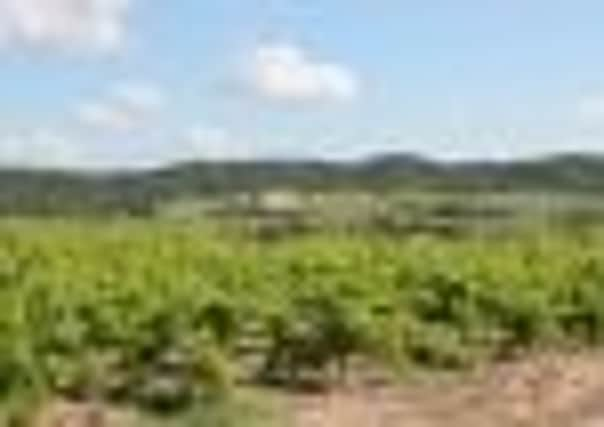Masters of medal table


Deciding which bottles get those sought-after medals is an industry in itself and I have been part of the judging panel of one of the largest wine competitions in the world for several years. The International Wine Challenge judges around 12,000 wines over two weeks in April. This year, 20 Panel Chairs, of which I am one, convened at Lord’s Cricket Ground with around 100 other tasters from industry specialists to Masters of Wine. And in groups of four of five we ploughed our way through 100 to 150 wines each day.
The process of judging is well-honed and usually runs very smoothly. All bottles are covered and if there is any chance that they might be recognised by a special shape of glassware then the wine is decanted into another anonymous bottle. Four-digit codes are allocated to each bottle and no matter how many times you think you might recognise a wine again, to be honest, the use of codes, the bottle covers and the sheer number of wines tasted each day means that each wine is delivered to the tastebuds fresh and without any thoughts other than how it tastes right now in the glass.
Advertisement
Hide AdAdvertisement
Hide AdUnlike some other competitions where you might just taste wines from one region during the day the Challenge varies the wines to keep the tastebuds fresh. Starting off with sparkling, and if you are lucky champagne, the flights vary from Sancerre to South African Shiraz and back again via wines from Australia, Chile, France, Germany and even Denmark plus several from places I didn’t even know grew gapes. Grouped together so that wines from the same grape and country are judged against each other, each one gets its fair share of attention and over the two weeks each wine goes in front of at least two panels and if it is judged good enough it can be tasted up to 6 times during the process.
That is why I believe that The International Wine Challenge is the most rigorous and reliable of all the wine competitions.
The initial results from the Challenge are out and while Trophies and other top accolades won’t be released until September it is worth picking up some of the medal winners now because they quite often sell out quickly once September arrives.
This year I have been impressed by the consistency of some producers and retailers. While a single Gold medal shows good winemaking, a whole fistful of medals shows that quality is taken very seriously across the board.
Advertisement
Hide AdAdvertisement
Hide AdMarks & Spencer stands out for the sheer number of medals it has won across a relatively small range. Golds were awarded to a deep-flavoured truffly Chianti Classico Riserva Castello della Paneretta 2008 (£13.99) and to a gutsy, pepper-edged Crozes Hermitage 2010 (£11.99). They also scooped a top award for the concentrated, dark, bramble fruit of Villa Magna Primitivo di Manduria 2010 from Puglia (£9.99) and the minerally, zesty Single Block Series S1 2011 (£12.99) from the Awatere Valley in Marlborough New Zealand.
Not surprisingly the company managed to win gold with several of their high-priced, limited distribution wines such as Chambolle Musigny (£38), and Meursault Premier Cru Les Charmes Dessus (£40) which are probably not going to find their way north but the real gem in their haul is Dry Old Oloroso sherry (£7.49 for a half bottle).
As a type of wine, sherry is the most undervalued, but that’s because most people haven’t tasted decent sherry for decades. This is sherry as it should be; aged for decades in a solera and it emerges with fabulous deep raisin, prunes, hazelnut and nutmeg flavours and long, dry complex finish. Drink it on its own on a chilly evening or team it with cheese, nuts and fruit cake.
Tesco also did well in the Challenge and they are to be commended for the number of their own-label Finest wines which struck Gold and Silver. Gold-medal winning Tesco Finest Viña Mara Gran Reserva Rioja 2004 is a firm favourite with many readers who know that it goes on offer periodically to bring it down from its regular £13.79 to nearer £10.
Advertisement
Hide AdAdvertisement
Hide AdThe Tesco website currently has it on offer, down to £61.50 for six bottles. Tesco Finest Albariño 2010 also won Gold for its delightful honeysuckle and crisp apricot flavours and at £7.99 it is well worth buying to sip in sunshine or to pair with a summer lunch.
Silver-medal winning Gran Tesoro Garnacha 2011 often gets a mention on these pages for its exuberant bramble fruit and earthy complexity, which is a joy in a wine that costs just £4.49. Team this with a pasta or pizza supper any night of the week and you won’t be disappointed.
Another regular in this column is Tesco Finest Tingleup Riesling 2011 (£9.99) which comes from the very chic and elegant Howard Park winery in Western Australia and it has crisp, lemon and lime flavours with an almost-dry finish.
This is the perfect wine to team up with a Thai-spice stir-fry or a chilli-dusted scallop. Watch out for this one for its regular appearance in the special offers list. With silver medals for Tesco Falanghina 2010 (£5.99), Finest Gigondas (£13.49), Finest Chablis Premier Cru (£14.49) and Pouilly Fumé 2009 (£12.79), it is clear that this range of wines is not just affordable but well-made too.
Advertisement
Hide AdAdvertisement
Hide AdOther outstanding results from the International Wine Challenge include a whole range of wines from Australian producer McGuigan whose ‘Shortlist’ range is now in Majestic. With Gold medals awarded to the Chardonnay 2010 (£11.99 on multibuy) and the Riesling 2007 and Silvers awarded to the Shiraz and the Cabernet Sauvignon (£11.99 on multibuy), it is clear that there is some quality winemaking going on in the Hunter Valley.